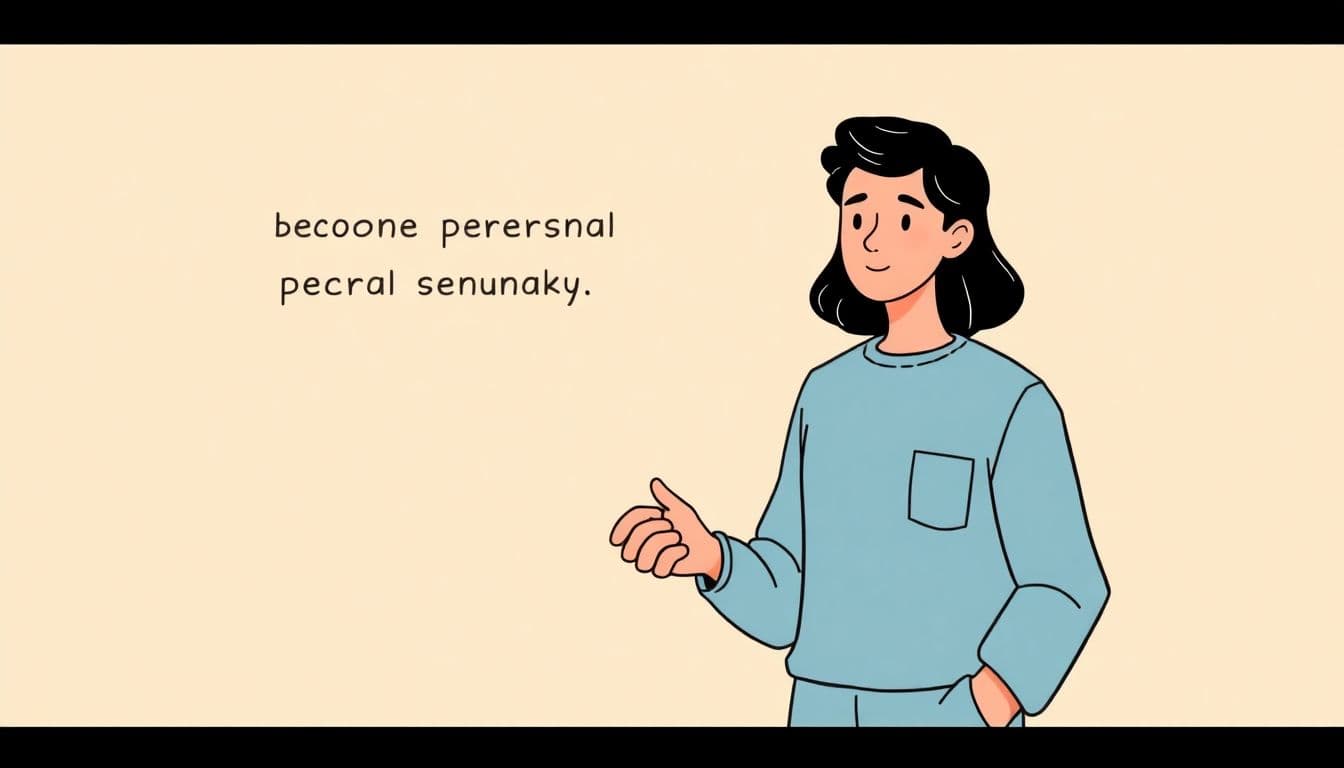Table of Contents
Feeling totally stuck staring at a blank screen? Happens to every single one of us—it’s super frustrating and can feel almost impossible to shake off. Trust me, you’re definitely not alone in suffering from writer’s block.
But don’t worry! I’m here to give you some amazing and unexpectedly simple ways to break free. Stick around, and soon you’ll be jotting down words like nothing ever stopped you.
Ready? Here are easy, friendly tips to finally kick writer’s block to the curb.
Key Takeaways
- Start by writing anything, even random ideas, to overcome feeling stuck.
- Take short breaks and step away from your screen to refresh your mind.
- Try writing in a different location to get new perspectives and ideas.
- Set a timer (such as using 25-minute intervals) to boost your focus and productivity.
- Don’t aim for perfection in your first draft—just get ideas down first and fix them later.
- Speak your ideas out loud or explain them to someone else when feeling confused.
- If you’re stuck, temporarily switch to another task to shift your mental gears.
- Create visual notes or mind maps if your thoughts feel tangled.
- Take proper care of your physical and mental health to keep creativity flowing.
- Do enjoyable, non-writing-related activities to find inspiration and new ideas.

Start Writing Anything to Get Unstuck
We’ve all stared at a blank screen until we felt like losing our minds—trust me, it happens to everyone. Research from Lumivero.com shows a whopping 70% of students deal with writer’s block at least occasionally. So you’re definitely not alone—just remember, the first step in getting past this is to simply write something down! It doesn’t matter if it’s off-topic or nonsensical, getting your fingers moving helps the ideas flow.
You can try a quick writing prompt or a fun exercise to loosen things up. Personally, I love using some quirky funny writing prompts for kids—who said silly stories are just for kids, right? Spend just five or ten minutes jotting down whatever comes to mind without stopping to edit or judge yourself. This way, you’ll silence that inner critic long enough to catch a wave of creativity.
The point is, writing anything—no matter how random—is better than staring at nothing. Once you’ve broken that initial barrier, you’ll find it’s easier to transition into more structured writing.
Take a Short Break to Refresh Your Mind
Hitting the wall? It’s totally fine to step away for a little while. When you’ve been looking at your screen too long, your brain desperately needs to recharge. Consider it similar to when your laptop starts overheating—it needs a break or it’ll freeze up completely.
Grab a quick snack, stretch your legs, or do a brief breathing exercise—anything that helps you reset. According to studies, even stepping away for as little as five to fifteen minutes can significantly restore concentration and help bring clarity to what you’re working on.
And here’s a tip I’ve found useful myself: When you’re taking a break, avoid social media scrolling—sorry, Instagram. Instead, choose an activity that lets you clear your thoughts, like going outside for fresh air, doing some stretches, or listening to calming music.
Write in a Different Location
If you constantly write at your desk or couch, your brain may associate that spot with stress, procrastination, or creative struggles. Simply changing your environment can often shake off the writer’s block blues and help you find a fresh perspective.
Switching locations doesn’t need to be complicated—head to a café, library, or even just another room in your house. Occasionally, I’ve drafted some of my best ideas while sitting outside in my backyard or on a park bench. You might be surprised how much this small shift can help your creativity.
A change in scenery can energize your mind, making it easier to tackle challenging sections of your writing. Pick a quiet spot (unless café buzz actually helps, in which case grab a seat near the espresso machine) and give your brain something new to look at.

Use a Timer to Stay Focused
The simple truth is a timer can be your best friend when you’re feeling stuck or distracted by every little notification coming through.
This strategy is known as the Pomodoro Technique, and here’s how you do it: set a timer for 25 minutes and work on your writing without stopping until the timer goes off.
Then take a quick 5-minute break—grab some tea, pet your dog, do anything else but think about your article.
After four rounds of this, give yourself a longer break of 20–30 minutes.
Setting timed intervals like this can help break your writing task into more manageable chunks and make your writing process feel less overwhelming.
Plus, the ticking clock adds a little urgency, keeping you from wasting valuable writing time scrolling aimlessly.
Lower Your Expectations for the First Draft
Your first draft doesn’t need to be amazing—and frankly, almost no one writes a perfect first draft anyway.
According to data from Lumivero.com, a huge percentage of writers struggle with writer’s block because they’re pressuring themselves too much right out of the gate.
The key is to lower your expectations for your initial draft and just focus on getting your thoughts out on paper (or, um, on your Google Doc).
Don’t pause to rewrite sentences or improve grammar, just plow forward and keep the momentum going.
The first draft is simply there as raw material; you’ll clean it up and polish later.
When I’m writing, I almost never reread a paragraph until I’m completely done with the draft—I find it helps to quiet my inner perfectionist and makes it easier to finish quicker.
Talk Through Your Ideas Out Loud
Can’t figure out what you’re really trying to write about? Start by talking through your ideas out loud.
When you’re stuck in your own head, talking can help clarify exactly what you’re struggling to say.
Try recording yourself or just explaining your idea to a friend—pretend you’re chatting with someone who knows nothing about your topic.
This conversational exploration often unlocks new ideas or insights that you weren’t previously aware of.
During this process, you might even start to identify better structures or organize your thoughts in ways you wouldn’t have discovered through typing alone.
If writing dialogue is especially challenging for you, check out these practical tips on how to format dialogue effectively.
Switch to a Different Task Temporarily
If you find yourself hitting a mental wall again and again, it might be helpful to temporarily switch gears and tackle something else for a bit.
Maybe there’s another small task on your to-do list—answering emails, organizing your workspace, or outlining another upcoming project.
Switching tasks temporarily can help your mind relax and quietly churn away at solutions without realizing it.
It’s like when you’re trying hard to remember someone’s name and as soon as you stop actively thinking about it—it magically pops into your head.
Stepping away from your writing task to work on another project can give you fresh ideas and insights when you return to the original task.
Create Visual Notes to Help You Organize Ideas
Sometimes words alone just don’t cut it—especially when your ideas feel too tangled to unravel with plain text.
If you’re struggling with clarity, try making visual notes instead.
This can mean sketching quick mind maps, diagrams, flowcharts, or even scribbling on index cards and rearranging them on the floor.
Visual representations can help you capture relationships between ideas and identify gaps in your logic.
Plus, visually mapping out plans and concepts can help you spot patterns and discover new relationships between things you initially thought unrelated.
If you’re into creative writing, quick sketches can help you think through descriptive scenes or even build a solid dystopian storyline before diving back into your piece.
Take Care of Your Physical and Mental Health
This one might’ve been repeated often enough to sound cliché—but honestly, your brain can’t produce great words if you’re neglecting your body and mind.
Simple things like drinking enough water, keeping healthy snacks nearby, and getting regular short breaks away from your screen can drastically improve your writing stamina.
Make sure you’re getting sleep—according to numerous studies, lack of rest can seriously dull your creative energies and make writing feel almost impossible.
Also, stress and anxiety can dramatically increase your writer’s block risks; incorporate mindful routines or meditations for a few minutes every day to lower any anxiety you might feel about writing.
Your best writing happens when your body and mind aren’t fighting against you—so keep an eye on your health and energy levels as you tackle your writing.
Do Something Non-Writing Related to Get Inspired
If the words just aren’t coming, sometimes the smartest move is to stop trying entirely—for a while anyway.
Do something enjoyable completely unrelated to writing: binge-watch your favorite sitcom episode, visit an art gallery, bake cookies, take a brisk walk outside—basically, anything refreshing that gets your mind out of that intense writing zone.
Taking time off for non-writing activities actually boosts your creativity and inspiration by giving your subconscious space to work through complex ideas.
For instance, some writers check out fascinating prompts like these engaging winter writing prompts not necessarily to write about immediately, but simply to stir fresh creative juices passively.
When you’re engaged in something totally unrelated and enjoyable, you might discover insights and fresh approaches to your writing after returning with renewed mental energy.
FAQs
Taking a brief break gives your brain a chance to reset, clears creative blocks, and reignites inspiration. Short periods away from your task can refresh your thinking, help you spot new connections, and improve overall clarity for writing.
Yes, a change of environment can break routine monotony and stimulate creativity. Writing in a new place can shift perspective, energize your mind, and encourage fresh ideas, leading to increased productivity and better focus on your task.
Lowering your initial expectations reduces pressure and perfectionism, enabling thoughts to flow more freely onto the page. First drafts are rarely perfect, but they provide a solid foundation that you can improve and polish later.
Visual notes like mind maps and diagrams simplify complex ideas, making them easier to organize and understand. These visual tools help you see relationships between concepts, streamline planning, and support your brainstorming process effectively.



